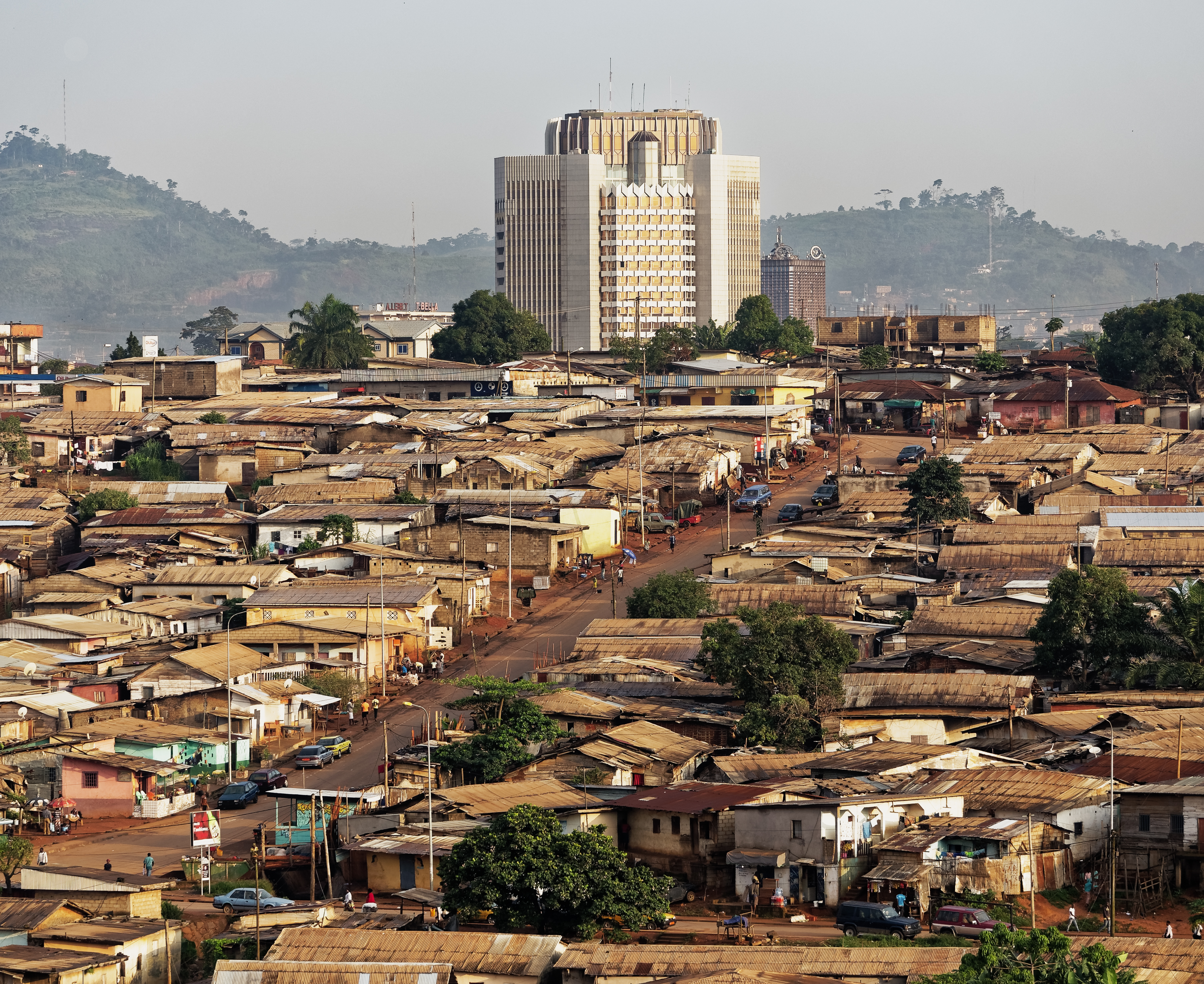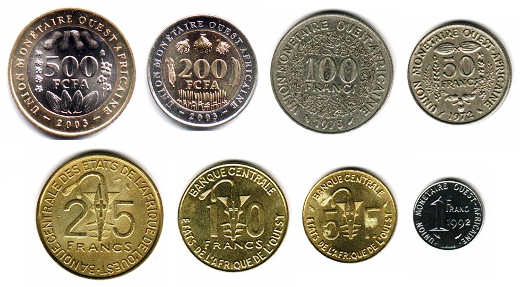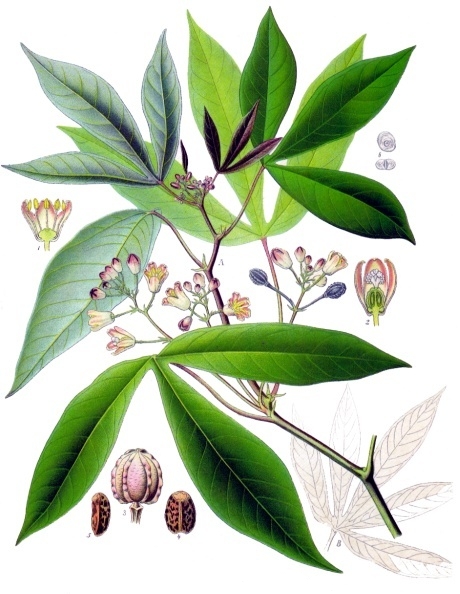|
BEAC
The Bank of Central African States (french: Banque des États de l'Afrique Centrale, BEAC) is a central bank that serves six central African countries which form the Economic and Monetary Community of Central Africa: *Cameroon *Central African Republic *Chad *Equatorial Guinea *Gabon *Republic of the Congo In December 2010, a WikiLeaks memo dated June 3, 2005, said that Gabonese officials working for the Bank of Central African States stole US$36 million over a period of five years from the pooled reserves, giving much of the money to members of France's two main political parties. Governors Philibert Andzembe of Gabon was Governor of the Bank of Central African States from July 2007 until October 2009, when he was fired by the new president of Gabon, Ali Bongo, in response to a bank scandal in which $28.3 million went missing from the bank's Paris branch. Jean Félix Mamalepot, also from Gabon, was Governor for the preceding 17 years. [...More Info...] [...Related Items...] OR: [Wikipedia] [Google] [Baidu] |
Jean-Félix Mamalepot
Jean-Félix Mamalepot (December 28, 1940 – December 12, 2012) was a Gabonese banker who was Governor of the Bank of Central African States The Bank of Central African States (french: Banque des États de l'Afrique Centrale, BEAC) is a central bank that serves six central African countries which form the Economic and Monetary Community of Central Africa: *Cameroon *Central African ... (BEAC) from 1990 to 2007."Gabon : Jean Félix Mamalepot quitte la tête de la BEAC" , InfoPlusGabon, May 1, 2007 . Life and career Mamalepot was born at Mbabiri in the Haut-Ogooué Province of Gabon;"Mamalepot Jean-Félix", ''Gabon: Les hommes de pouvoir'', number 4[...More Info...] [...Related Items...] OR: [Wikipedia] [Google] [Baidu] |
Casimir Oyé-Mba
Casimir Marie Ange Oyé-Mba (20 April 1942 – 16 September 2021) was a Gabonese politician. After serving as Governor of the Bank of Central African States (BEAC) from 1978 to 1990, Oyé-Mba was Prime Minister of Gabon from 3 May 1990 to 2 November 1994.Nancy Ellen LawlerGabon: Year in Review 1994, Britannica.com. Subsequently, he remained in the government as Minister of State for Foreign Affairs from 1994 to 1999, Minister of State for Planning from 1999 to 2007, and Minister of State for Mines and Oil from 2007 to 2009. Early life and financial career A member of the Fang ethnic group,"Main candidates in Gabon's presidential vote" Reuters, 30 August 2009. Casimir Oyé-Mba was born in [...More Info...] [...Related Items...] OR: [Wikipedia] [Google] [Baidu] |
Central African CFA Franc
The Central African CFA franc ( French: ''franc CFA'' or simply ''franc''; ISO code: XAF; abbreviation: F.CFA) is the currency of six independent states in Central Africa: Cameroon, Central African Republic, Chad, Republic of the Congo, Equatorial Guinea and Gabon. These six countries have a combined population of 55.2 million people (as of 2020), and a combined GDP of US$113.322 billion (as of 2020). CFA stands for ''Coopération financière en Afrique centrale'' ("Financial Cooperation in Central Africa"). It is issued by the Bank of Central African States (BEAC; ''Banque des États de l'Afrique Centrale''), located in Yaoundé, Cameroon, for the members of the Economic and Monetary Community of Central Africa (CEMAC; ''Communauté Économique et Monétaire de l'Afrique Centrale''). The franc is nominally subdivided into 100 ''centimes'' but no centime denominations have been issued. In several west African states, the West African CFA franc, which is of equal value ... [...More Info...] [...Related Items...] OR: [Wikipedia] [Google] [Baidu] |
Economy Of Equatorial Guinea
The economy of Equatorial Guinea has traditionally been dependent on commodities such as cocoa and coffee, but is now heavily dependent on petroleum due to the discovery and exploitation of significant oil reserves in the 1980s. In 2017, it graduated from "Least Developed Countries, Least Developed Country" status, the only Sub-Saharan African nation that managed to do so besides Botswana. However, despite the economic growth and improving infrastructure, the country has been ranked only List of countries by Human Development Index, 138th out of 188 countries on the United Nations Human Development Index in 2015 and despite its impressive GNI figure, it is still plagued by extreme poverty because its Gini coefficient of 65.0 is the highest in the entire world . After the price of oil, oil price collapsed in 2014, the economy went into a free fall which put growth in a downward spiral from around 15% to −10%. Economy overview Pre-independence Equatorial Guinea counted on Cocoa ... [...More Info...] [...Related Items...] OR: [Wikipedia] [Google] [Baidu] |
Economy Of Africa
The economy of Africa consists of the trade, industry, agriculture, and human resources of the continent. , approximately 1.3 billion people were living in 54 countries in Africa. Africa is a resource-rich continent. Recent growth has been due to growth in sales in commodities, services, and manufacturing. West Africa, East Africa, Central Africa and Southern Africa in particular, are expected to reach a combined GDP of $29 trillion by 2050. In March 2013, Africa was identified as the world's poorest inhabited continent; however, the World Bank expects that most African countries will reach "middle income" status (defined as at least US$1,025 per person a year) by 2025 if current growth rates continue. There are a number of reasons for Africa's poor economy: historically, even though Africa had a number of empires trading with many parts of the world, most people lived in tribal rural societies; in addition, European colonization and the later Cold War created political, ... [...More Info...] [...Related Items...] OR: [Wikipedia] [Google] [Baidu] |
CFA Franc
The CFA franc (french: franc CFA, , Franc of the Financial Community of Africa, originally Franc of the French Colonies in Africa, or colloquially ; abbreviation: F.CFA) is the name of two currencies, the West African CFA franc, used in eight West African countries, and the Central African CFA franc, used in six Central African countries. Although separate, the two CFA franc currencies have always been at parity and are effectively interchangeable. The ISO currency codes are XAF for the Central African CFA franc and XOF for the West African CFA franc. On 22 December 2019, it was announced that the West African currency would be reformed and replaced by an independent currency to be called Eco. Both CFA francs have a fixed exchange rate to the euro: 100 CFA francs = 1 French franc = €0.152449; or €1 = F 6.55957 = F.CFA 655.957 exactly. Usage CFA francs are used in fourteen countries: twelve nations formerly ruled by France in West and Central Africa (excludin ... [...More Info...] [...Related Items...] OR: [Wikipedia] [Google] [Baidu] |
Central Banks And Currencies Of Africa
There are two African currency unions associated with multinational central banks; the West African Banque Centrale des États de l'Afrique de l'Ouest (BCEAO) and the Central African Banque des États de l'Afrique Centrale (BEAC). Members of both currency unions use the CFA Franc as their legal tender. Below is a list of the central banks and currencies of Africa. See also * Africa * Economy of Africa * List of African countries by GDP (nominal) * List of African stock exchanges * List of currencies in Africa African currency was originally formed from basic items, materials, animals and even people available in the locality to create a medium of exchange. This started to change from the 17th century onwards, as European colonial powers introduced thei ... References World Economic Outlook Database, October 2012 International Monetary Fund. Accessed on October 10, 2013. {{DEFAULTSORT:Central Banks And Currencies Of Africa Africa-related lists Currencies of Africa [...More Info...] [...Related Items...] OR: [Wikipedia] [Google] [Baidu] |
Banque Centrale Des États De L'Afrique De L'Ouest
The Central Bank of West African States (french: Banque Centrale des États de l'Afrique de l'Ouest, BCEAO) is a central bank serving the eight west African countries which share the common West African CFA franc currency and comprise the West African Economic and Monetary Union (UEMOA): *Benin *Burkina Faso *Guinea-Bissau * Ivory Coast (Côte d'Ivoire) *Mali *Niger *Senegal *Togo The Bank is active in developing financial inclusion policy and is a member of the Alliance for Financial Inclusion. History Its predecessor, the ("note-issuing institute of French West Africa and Togo"), was created in 1955 and became BCEAO in 1959. The treaty establishing the West African Monetary Union (UMOA), signed on May 12, 1962, gave BCEAO the exclusive right to issue currency as the common central bank for the, then, seven member countries: *Ivory Coast *Dahomey (modern day Benin) * Haute-Volta (modern day Burkina Faso) *Mali *Mauritania *Niger *Senegal On June 30, 1962 Mali left the group ... [...More Info...] [...Related Items...] OR: [Wikipedia] [Google] [Baidu] |
Governor Of The Bank Of Central African States
A governor is an administrative leader and head of a polity or political region, ranking under the head of state and in some cases, such as governors-general, as the head of state's official representative. Depending on the type of political region or polity, a ''governor'' may be either appointed or elected, and the governor's powers can vary significantly, depending on the public laws in place locally. The adjective pertaining to a governor is gubernatorial, from the Latin root ''gubernare''. Ancient empires Pre-Roman empires Though the legal and administrative framework of provinces, each administrated by a governor, was created by the Romans, the term ''governor'' has been a convenient term for historians to describe similar systems in antiquity. Indeed, many regions of the pre-Roman antiquity were ultimately replaced by Roman 'standardized' provincial governments after their conquest by Rome. Plato used the metaphor of turning the Ship of State with a rudder; the Latin w ... [...More Info...] [...Related Items...] OR: [Wikipedia] [Google] [Baidu] |
Economy Of The Republic Of The Congo
The economy of the Republic of the Congo is a mixture of subsistence hunting and agriculture, an industrial sector based largely on petroleum extraction and support services. Government spending is characterized by budget problems and overstaffing. Petroleum has supplanted forestry as the mainstay of the economy, providing a major share of government revenues and exports. Nowadays the Republic of the Congo is increasingly converting natural gas to electricity rather than burning it, greatly improving energy prospects. Historical overview Earlier in the 1990s, Congo's major employer was the state bureaucracy, which had a payroll of 80,000, which is enormous for a country of Congo's size. The World Bank and other international financial institutions pressured Congo to institute sweeping civil service reforms to reduce the size of the state bureaucracy and pare back a civil service payroll that amounted to more than 20% of GDP in 1993. The effort to cut back began in 1994 with a ... [...More Info...] [...Related Items...] OR: [Wikipedia] [Google] [Baidu] |
Economy Of Chad
The economy of Chad suffers from the landlocked country's geographic remoteness, drought, lack of infrastructure, and political turmoil. About 85% of the population depends on agriculture, including the herding of livestock. Of Africa's Francophone countries, Chad benefited least from the 50% devaluation of their currencies in January 1994. Financial aid from the World Bank, the African Development Bank, and other sources is directed largely at the improvement of agriculture, especially livestock production. Because of lack of financing, the development of oil fields near Doba, originally due to finish in 2000, was delayed until 2003. It was finally developed and is now operated by ExxonMobil. In terms of gross domestic product, Chad ranks 143rd globally with $11.051 billion dollars as of 2018. Agriculture Chad produced in 2018: * 987 thousand tons of sorghum; * 893 thousand tons of peanut butter; * 756 thousand tons of millet; * 484 thousand tonnes of yam (8th largest produ ... [...More Info...] [...Related Items...] OR: [Wikipedia] [Google] [Baidu] |
Economy Of Cameroon
The economy of Cameroon was one of the most prosperous in Africa for a quarter of a century after independence. The drop in commodity prices for its principal exports – petroleum, cocoa, coffee, and cotton – in the mid-1980s, combined with an overvalued currency and economic mismanagement, led to a decade-long recession. Real per capita GDP fell by more than 60% from 1986 to 1994. The current account and fiscal deficits widened, and foreign debt grew. Yet because of its oil reserves and favorable agricultural conditions, Cameroon still has one of the best-endowed primary commodity economies in sub-Saharan Africa. Agriculture Cameroon produced in 2018: * 5million tons of cassava (13th largest producer in the world); * 3.9million tonnes of plantain (3rd largest producer in the world, only behind Congo and Ghana); * 2.6million tons of palm oil (7th largest producer in the world); * 2.3million tons of maize; * 1.9million tons of taro (3rd largest producer in the world, seco ... [...More Info...] [...Related Items...] OR: [Wikipedia] [Google] [Baidu] |




